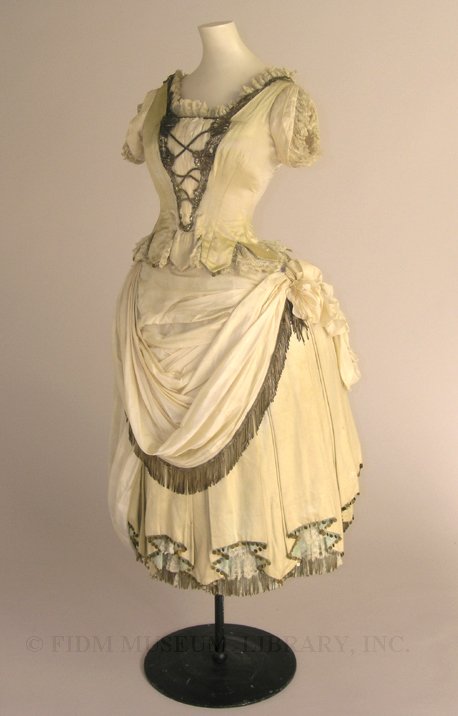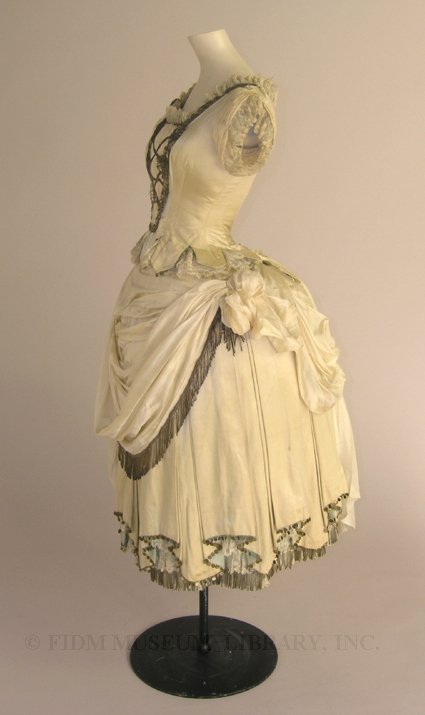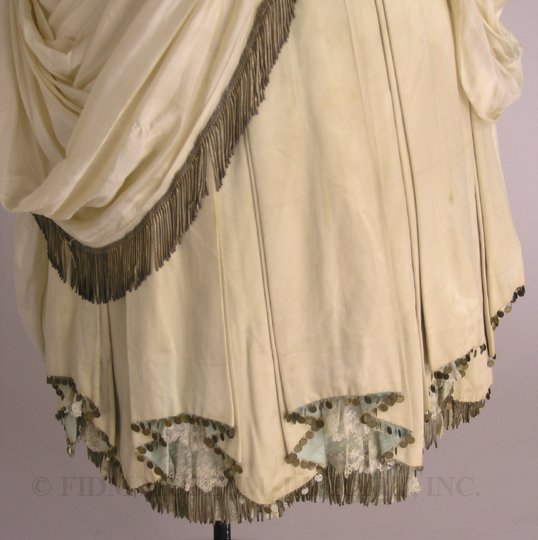Halloween is next week! Will you be dressing up? For those of you who need a little costume inspiration, we offer you this post on an 1880s fancy dress costume in our collection. First posted in 2009, it's one of our most popular blog posts. Read through to the end for access to an amazing 19th century fancy dress manual. Enjoy!
**********
Contemporary Halloween celebrations offer an opportunity for young and old to dress in costume, but in the 19th and early 20th century, Halloween was primarily geared towards children. Adults who wanted to dress-up attended or hosted fancy dress balls. Not connected to a specific holiday, fancy dress balls and parties took place throughout the year and could be small private events or large-scale public fundraisers. Some fancy dress balls were thematic and related to contemporary or historic events while others were more open, simply requiring attendees to come in costume. Unlike the macabre and/or sexy Halloween costumes of today, fancy dress costumes covered a much broader range of topics: historic figures, abstract concepts, works of art, pieces of furniture, natural phenomena, animals and popular novels or plays. Suggested costumes were published in fashion periodicals and in descriptive
manuals. Our fancy dress costume represents an undetermined character, though we think it might be intended as gypsy dress.

Fancy dress costume
c. 1883-87
Swan & Edgar
Gift of Helen Larson Estate
2001.31.15AB
Fancy dress was popular at nearly all economic levels and was available at multiple price points. Many revelers probably used published patterns to create fancy dress, while wealthier individuals purchased their fancy dress. Rental houses offered both fancy dress and formal dress short-term rentals at reasonable rates. For those who could afford it, even couturiers such as Worth and Poiret designed fancy dress costumes for their clients. Our gypsy dress bears a tag reading Swan & Edgar, a London department store.
As does Halloween today, 19th century fancy dress allowed individuals to dress and act outside the normal bounds of propriety. Aristocrats dressed as peasants and the poor dressed as royalty, while both groups probably displayed more skin than
usual. Though the wearer of Swan & Edgar's fancy dress definitely covered her legs with stockings, the length still exposes much more of the body than was commonly acceptable in the 1880s. While the opportunity to relax social norms was part of the appeal of fancy dress, it was also considered somewhat dangerous. For this reason, fancy dress costumes never included masks or face coverings. Masking or masquerades allowed participants too much license and were thought to result in lewd behavior. A December 24, 1869 New York Times article titled "The Masked Ball Orgies at the French Theatre" outlined
the dangers of masking. At this masked ball, revelers were so out of control "they deliberately hurled one of the female dancers from the proscenium box to the floor beneath, a distance of several feet." The dancer suffered a "broken thigh."
Though fancy dress was not meant to be worn as fashionable dress, it often featured elements carried over from fashion. From this side view, you'll notice a prominent bustle, a typical feature of 1880s fashion. For the designer and wearer, it was probably impossible to entirely separate the notion of fashion from the idea of costume.
In this detail shot, you can see the metal coil and coin trim. Both were once silver, but have now tarnished. The coins are inscribed with what might be Arabic script.
If you're still wondering what to wear on Halloween, check out this 1887 fancy dress manual, Fancy Dress Described, or what to wear at fancy balls. This book went through multiple printings in the 1880s and 1890s and was extremely popular. The fantastic site Archive.org has scanned the entire book, complete with images. I recommend this costume!





This is an amazing piece of 19th century fancy dress, beyond charming! And a great little article too. However, I’m curious where the designation of a ‘gypsy’-themed costume comes from. It just shouts Greco-Roman inspired/themed to me. While saying it is highly stylised is a huge understatement, the cascading folds of the underskirt, the swagging of the overskirt to look like ‘wet drapery’, the treatment of the cap sleeves, and the colour palette of mostly white with silver and pale blue strike me as entirely classical in derivation – the tiny silver Arabic coins that would not be noticed as such from any distance notwithstanding. Of course, not being able to examine it close-up and in-person I may easily be missing something that strongly suggests ‘gypsy’, it just seemed an odd designation to me. Thanks for sharing such a fun piece, I do love this blog!
Hi Carolyn,
Thanks for your comment. It’s great to hear that you enjoy our blog!
I’ve been thinking about your suggestion that this might be classical or Greco-Roman fancy dress. The suggestion that it might be a gypsy-themed outfit came from the original cataloger and was an educated guess based on some primary source research. In person, I think the metal coins and metal coil fringe, the lace inset in the bodice and sleeves, don’t read (to me at least!) as Greco-Roman. But, as we haven’t found an exact match, it’s still open to interpretation!